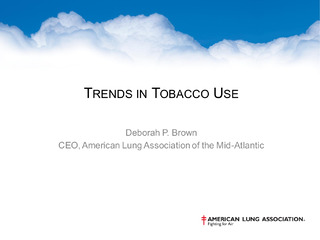Cancer Risk Reduction
View the 2024 Delaware Cancer Consortium Annual Retreat Presentations
There are modifiable behaviors that can affect an individual’s cancer risk.
We’ve known for many years about the cancer risk associated with smoking, secondhand smoke, and the use of other tobacco products. Quitting smoking can significantly reduce the threat of cancer and other diseases. Not only does it reduce our cancer risk, but it also keeps secondhand smoke from harming those around us. As we move forward over the next five years, we will work toward increasing the number of Delawareans who choose to quit using tobacco. We will continue to support policies and programs aimed at preventing young adults from starting to use tobacco, reducing tobacco use, and reducing exposure to secondhand smoke. In addition to tobacco use, what we eat and how much physical activity we get impacts our cancer risk. Eating healthy and being physically active can reduce the risk of cancer and other diseases. Therefore, we all have a chance to control and limit our risk for cancer. Goals for the next five years include the promotion of healthy lifestyles centering around initiatives that address physical activity, nutrition, and obesity prevention.
The results are encouraging
- 21% of public high school students say they smoked cigarettes during the past month, down from 35% in 1997.
- 55.5% of smokers tried to quit smoking for at least a day or more during the past year.
- 70.2% of adult smokers reported that their doctor or health care provider advised them to quit smoking in the past year.
- Only one in every five Delawareans smokes.
But there is still more to do
- Our tobacco excise tax must be increased so that it is at least comparable to that of neighboring states.
- Employers must be encouraged to fund programs to help people stop using tobacco and to become partners in existing programs that have been successful.
- Factors that affect cancer such as obesity must become a priority in both education and program implementation. Recent studies show that these factors cause 14% of the deaths from cancer in men and 20% of the deaths in women, particularly in cancers of the colon, breast (postmenopausal), endometrium (the lining of the uterus), kidney, esophagus, gallbladder, ovaries, and pancreas.
- Educating adults about the damaging effects of secondhand smoke on those least able to control their environment, children under the age of 18, could make a significant impact.
Members
Chair:
Bethany Hall-Long, RNC, PhD
- Nicole Pickles
- Mike Herman
- Lance Kilpatrick
- Meredith Phillips-Woodard
- Amy Gootee-Ash, MD
- Thomas Schwaab, MD, PhD
- Wendell Covell
Meeting Minutes
2010
2003
Resources
